A glimpse into the life of an Air Quality Intern
Jul 9, 2020
My name is Kaylyn Sinisgalli. I’ll be graduating from Georgia Tech in the fall with a degree in Environmental Engineering and this summer I’m interning with the SMART Sea Level Sensor’s project on the Air Quality team. Working with the SMART Sea Level Sensor’s Air Quality team is not my first Georgia Tech SLS experience and I hope it won’t be my last!
How I became an SLS Intern
I’ve been involved with SLS since its inception which happened to be my first semester at Georgia Tech. I was a part of the first SLS GT-1000 course in the Fall of 2016 which hooked me for more SLS experiences. In the spring of my second year I participated in the first edition of “Serve-Learn-Sustain in Spain,” the GT faculty lead study abroad program to Granada, Spain in the spring of 2018 with Dr. Kelly Comfort. My SLS study abroad program was my first real introduction to community lead projects. As a part of the program, we were required to take a service-learning course (definitely one of the most valuable courses I have taken at GT!) and design a service-learning project around a community organizations (some of my work is pictured below).
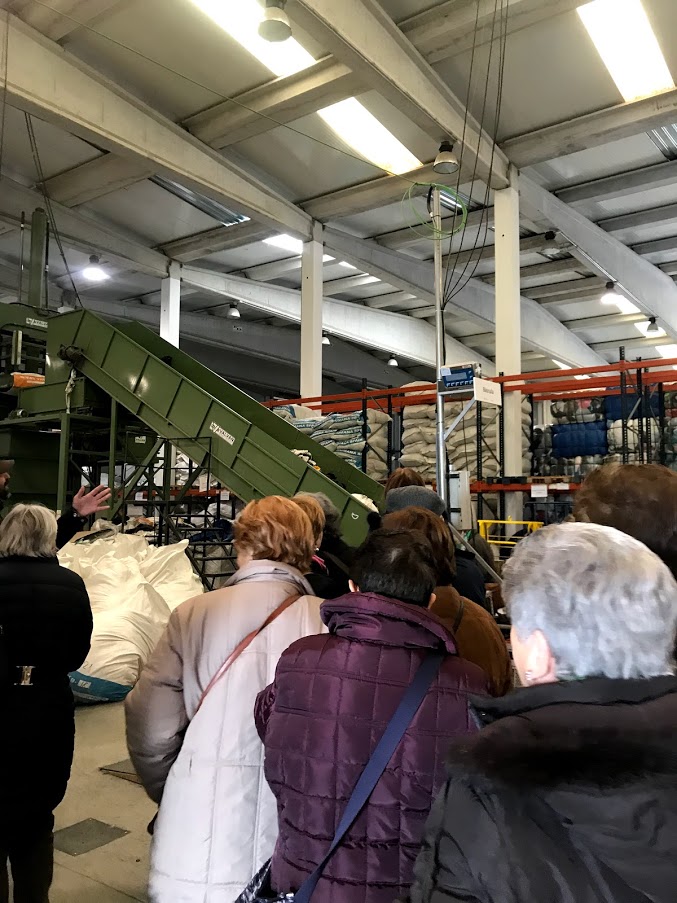
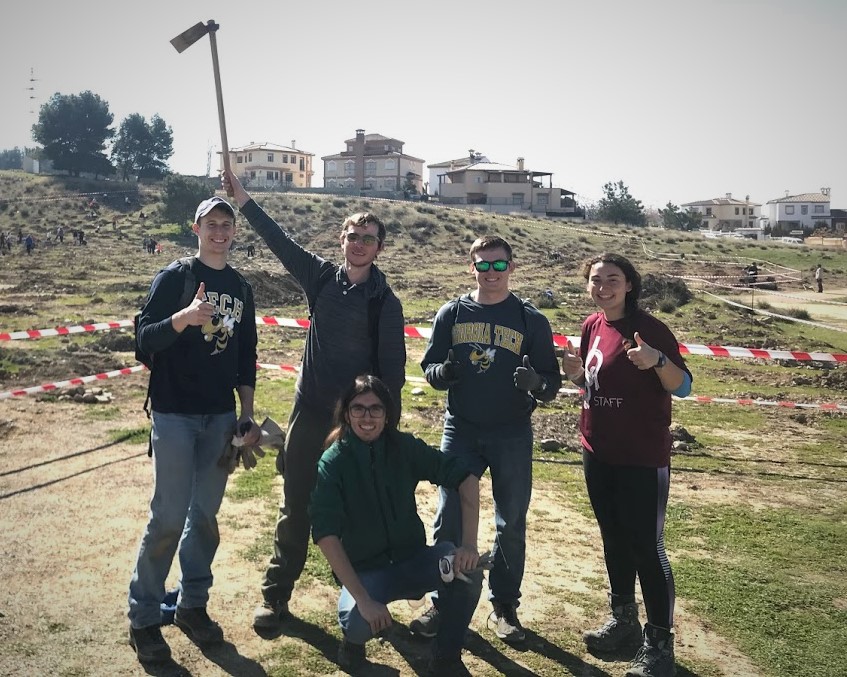
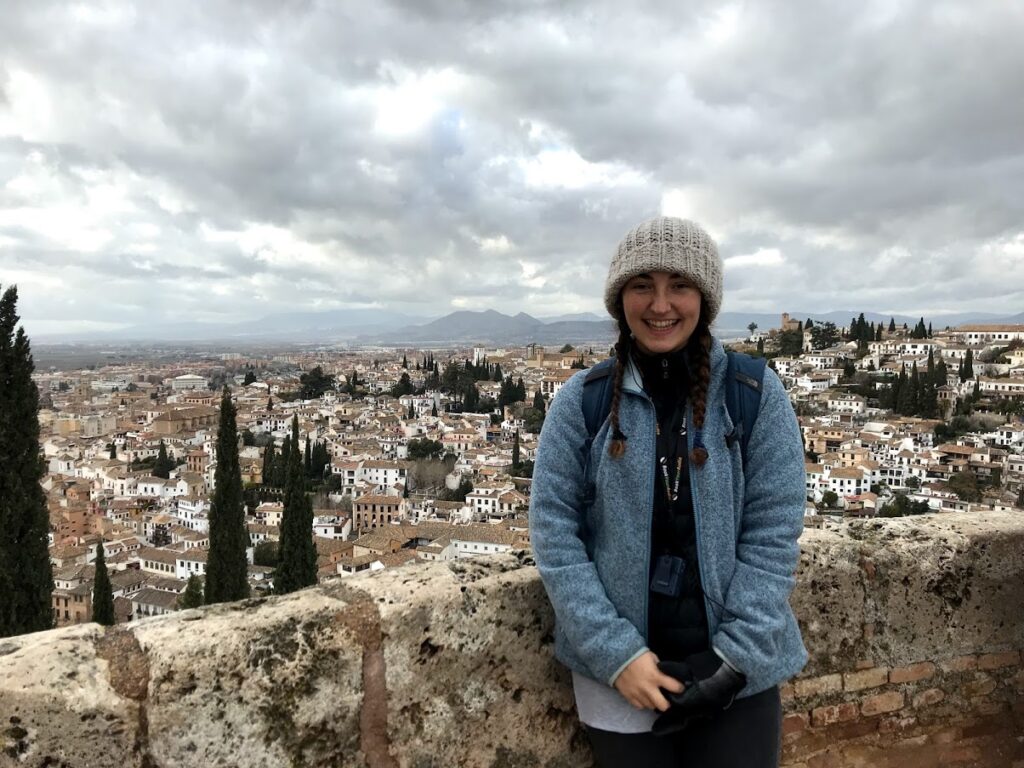
Although I had to leave Spain, I did not leave behind the impacts my service-learning project made on me. I experienced the value added to work when the work was driven by a community need and I knew I wanted to continue to be a part of community-driven projects in the future.
As I’m graduating in the fall, I wanted to spend my last summer interning with a community-based organization. While in Sea Level Rise and Costal Geotechnics, a SLS affiliated course co-taught by Dr. Alex Robel and Dr. Jorge Macedo, I had the pleasure of listening to Dr. Cobb speak about her SMART sea level sensors project, which inspired me to apply for SLS internships.
I’ve really enjoyed working with the team this summer! Due to COVID-19 I am working remotely, but I’ve still been able to learn so much and communicate with team members easily. I’m enjoying the work-life balance I’ve had this summer by working remotely and am thankful for the extra time I’ve been able to spend with my family without a commute!
My Intern Experience
I think my biggest take away from this internship experience thus far has been tremendous growth in my technical skills. Coming into the internship, I had some coding experience from previous internships and projects, but I did not have experience with leveraging REST APIs or python, both of which are crucial elements to the work I have done this summer.
For those of you who are unfamiliar as I was at the beginning of my internship, API stands for “Application Programing Interface.” APIs provide a set of documented ways to interact with and retrieve data from a database. The SMART Sea Level Sensors team is developing an API to store the sea level sensor data; similarly, PurpleAir, in addition to the PurpleAir map which allows you to manually download spreadsheets of data for a certain monitor label, has a historical API, Thingspeak, which allows users to access numerical and metadata recorded from every public sensor.
I’ve really enjoyed learning how to get data from APIs through pulling West Savannah PurpleAir data. By working with an API through Google Colabs, I haven’t had to store any of the data I’ve observed on my PC and I’ve been able to run my scripts on Google’s clusters, making my code run much faster than it normally would. I’ve also set the Colab notebook (it works just like a jupyter notebook and can be downloaded directly as a py file which is awesome!) to save any charts I export directly to the Air Quality Team Drive, making it easy for everyone to see what I’m working on.
If you want to practice pulling PurpleAir data yourself, I created a Colabs notebook to walk new user through the process. It can be found here! Feel free to reach out to me with questions! They also have awesome resources on their website if you want to start by pulling Excel files.
My main goal for this summer is to calibrate the PurpleAir sensors with the EPD air quality monitor at the L&A site in Savannah. Dr. Clark worked with our contacts in Savannah to place four PurpleAir monitors at the EPD site in Savannah. In theory, the PurpleAir monitors should report the same PM concentrations the EPD reports, as the devices are co-located, but in reality, a correction factor may be needed. I’m working with Dr. Russell Clark, EPD contacts, and Sea Level sensor team members to figure out the best way to do this.
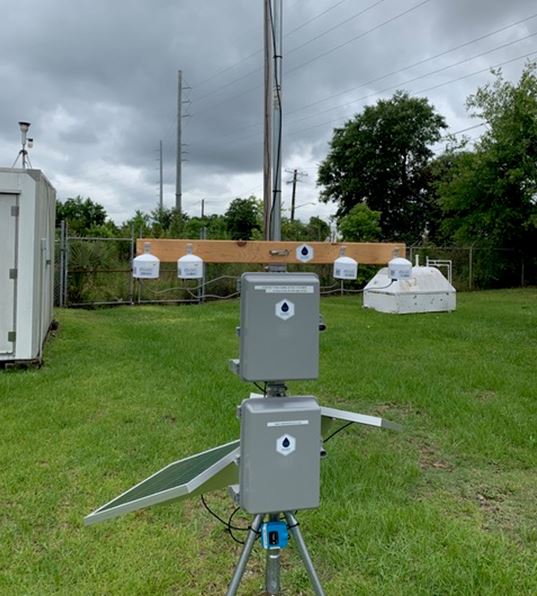
Sensor Labels: West Savannah 1,2,3,& 5
Just as the PurpleAir data can be accessed through an API, EPD data can be pulled using an API as well. I’ve created a script to pull data from the same time frames and compare the two data sets which has allowed me to visualize the two data sets together. When looking through the data, I’ve enjoyed looking for real life events in the PM trends. See if you can spot 4th of July fireworks and the Saharan Dust Cloud in the data below in the PM data in the graphs below! (keep in mind the data is in GMT, so you need to subtract 4 hours, so 8 pm on the graph is 4pm EST!)
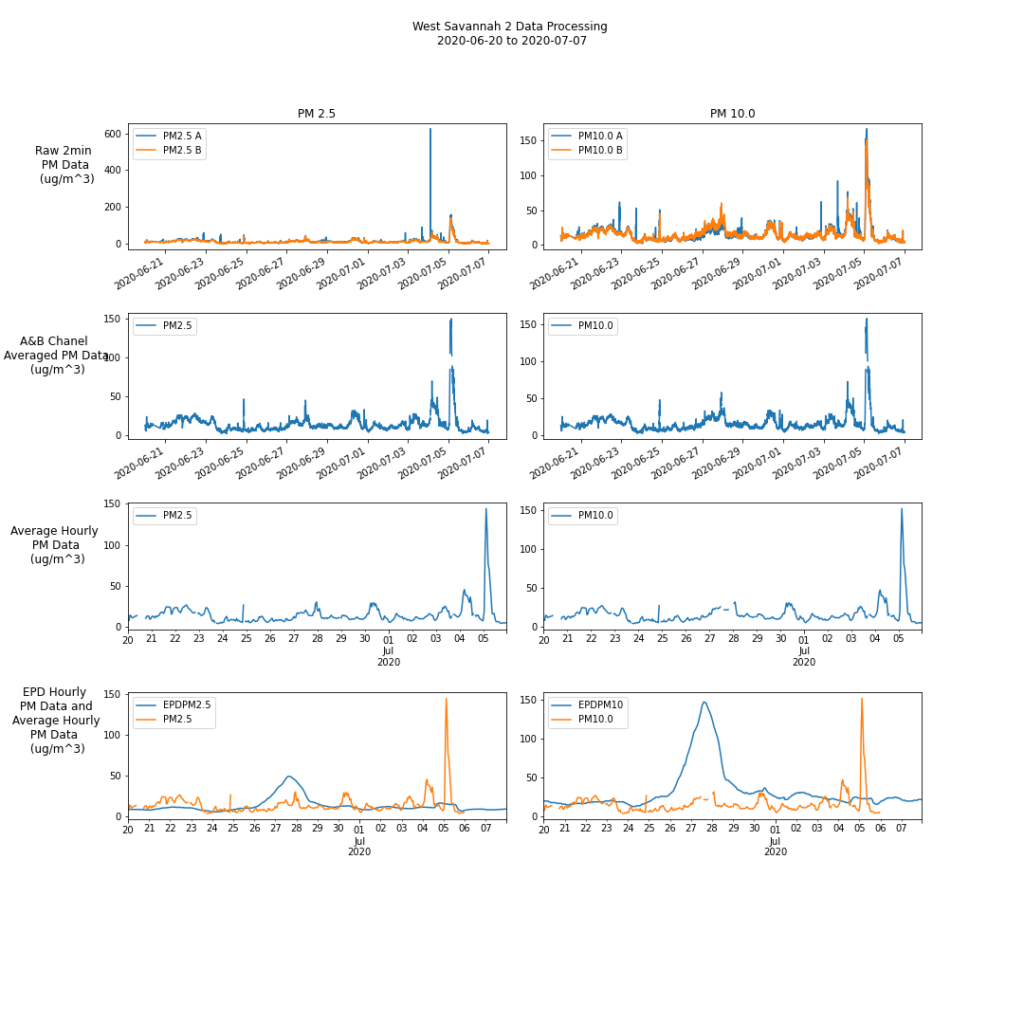
I’m sad there is only a month left in my internship! I’ve really enjoyed my time thus far with the SMART Sea Level Sensor team. I’m looking forward to the Hurricane Conference at then end of the month and the remaining bi-weekly team calls. Last week I was able to present to the whole team and our partners on what I’ve been working on this summer – the presentation is linked here.

1 comment
Alyson Laura
5 years ago
Hi Kaylyn, Your sensor calibration work is so important! I loved working with you :)